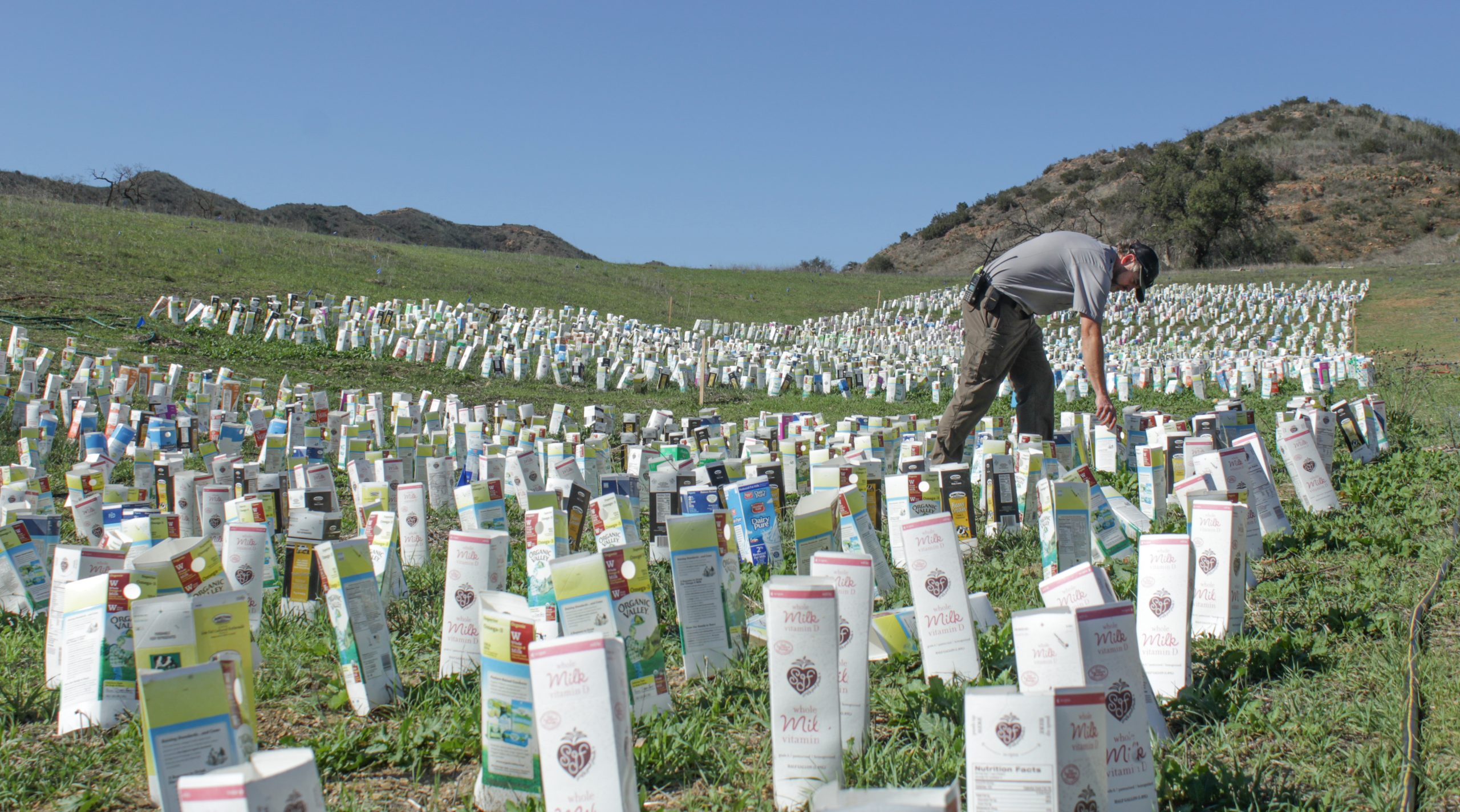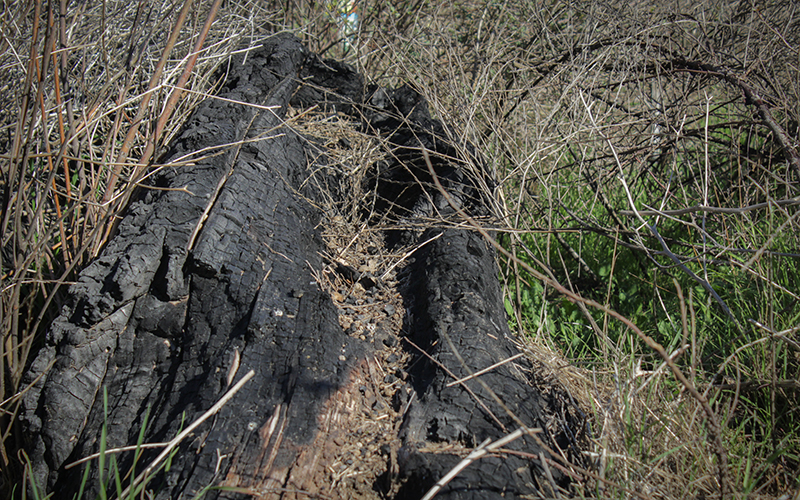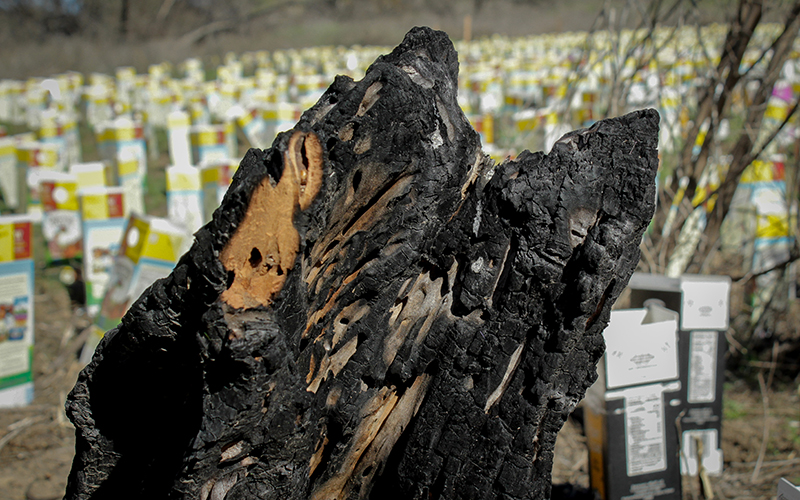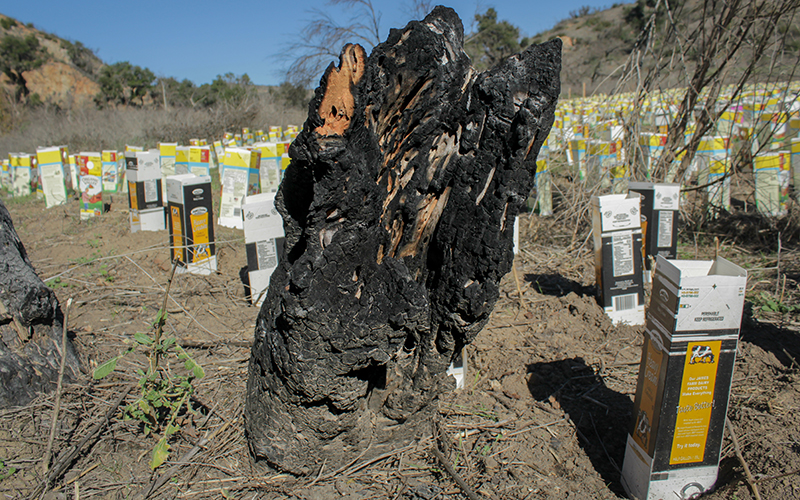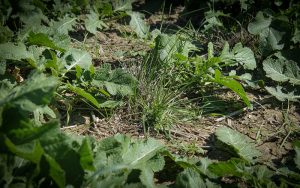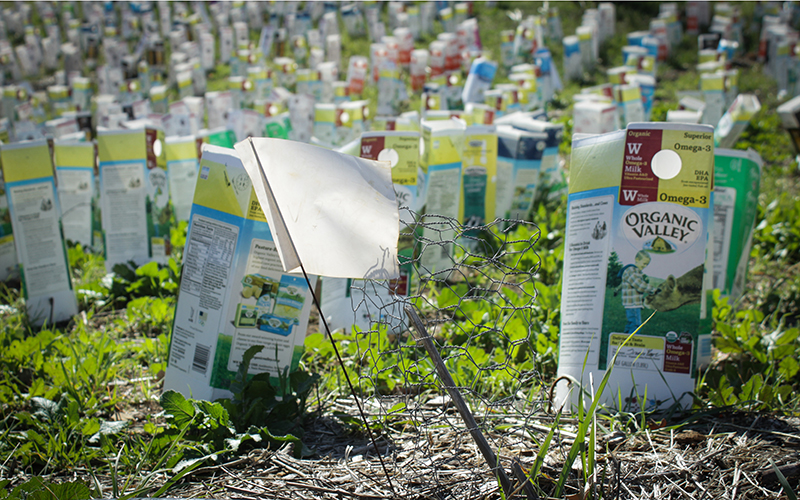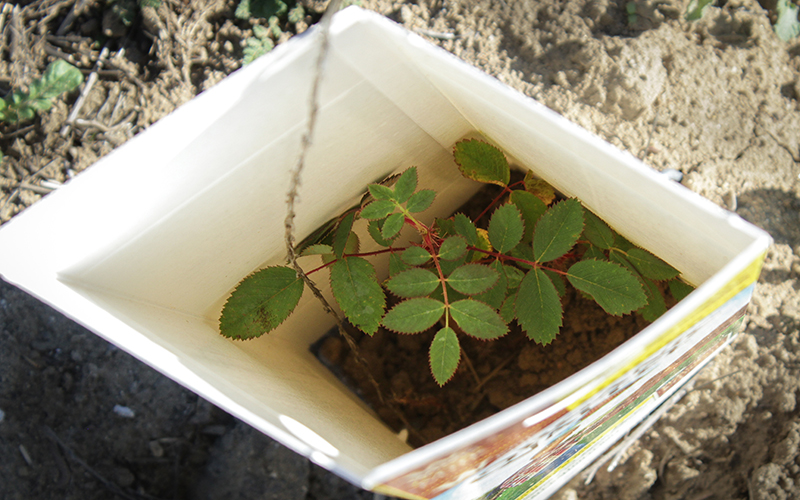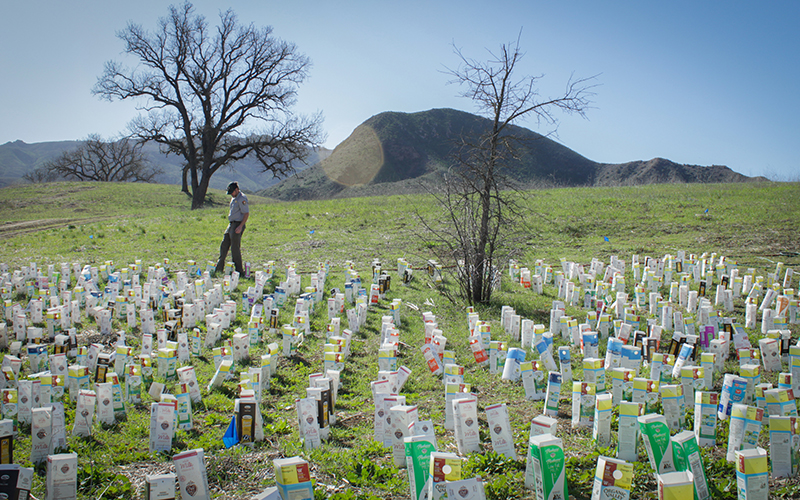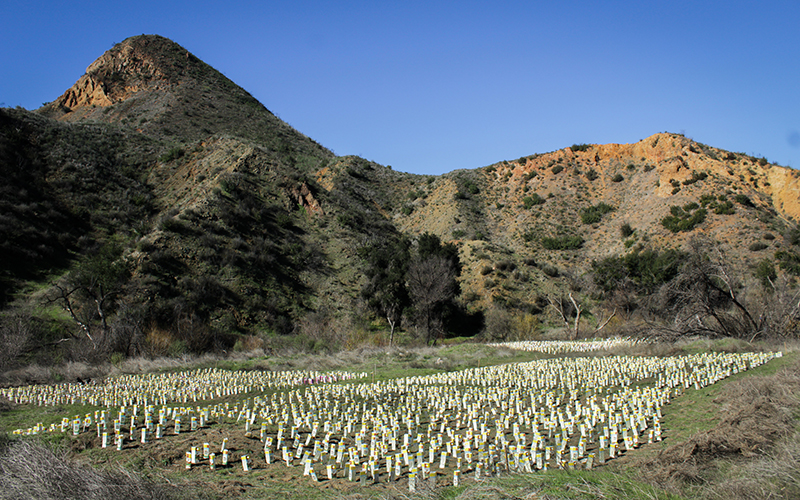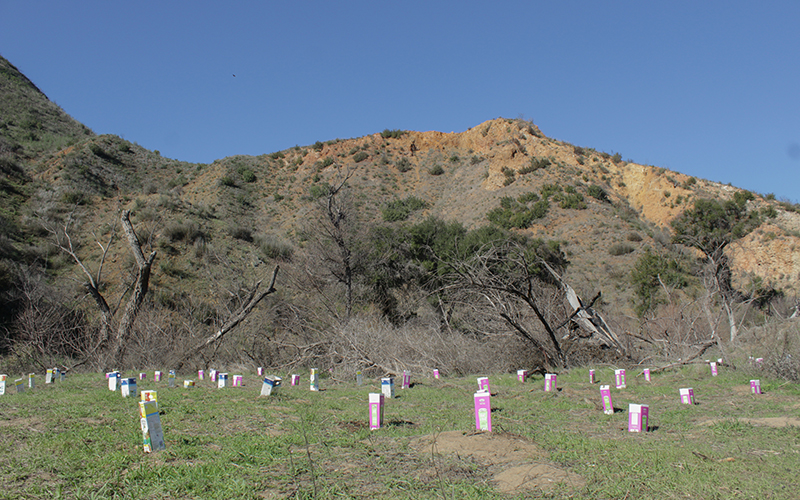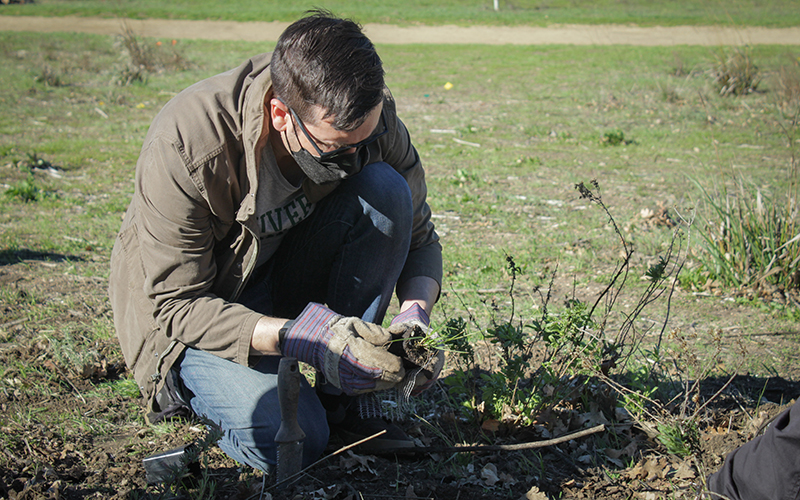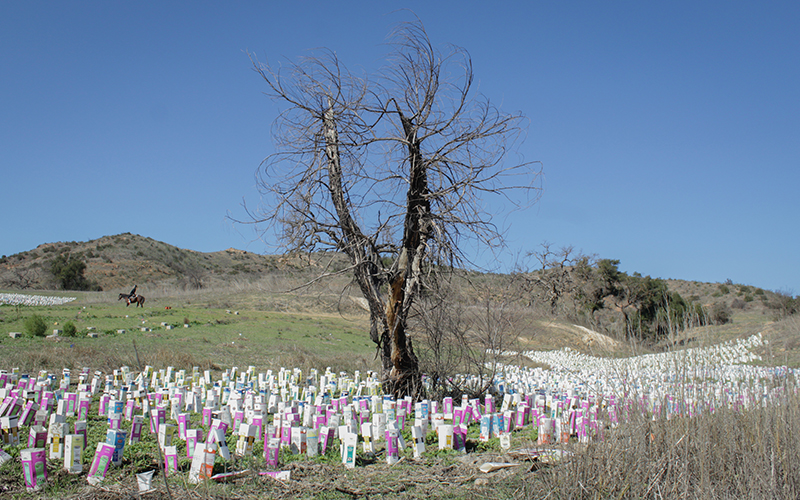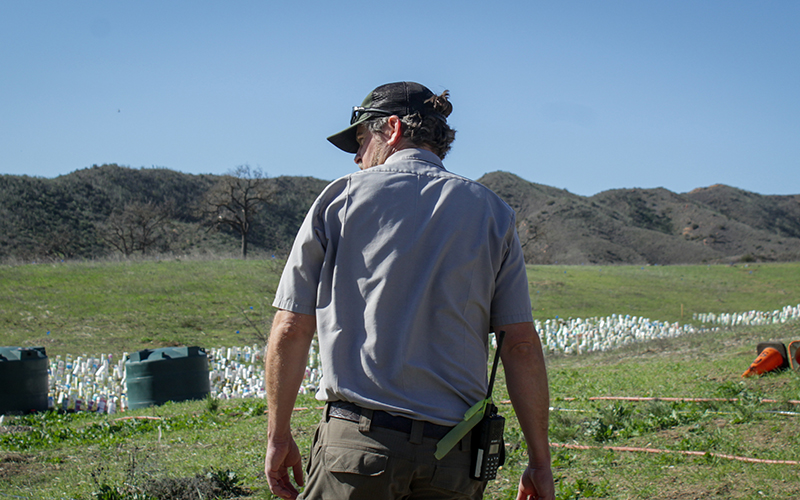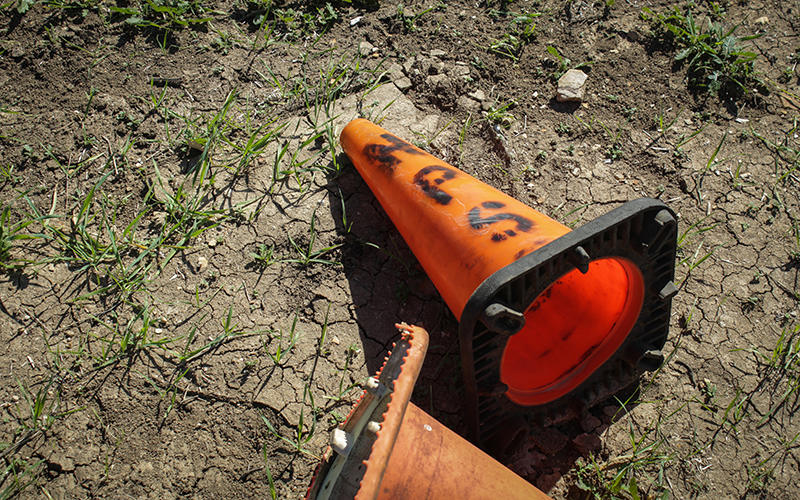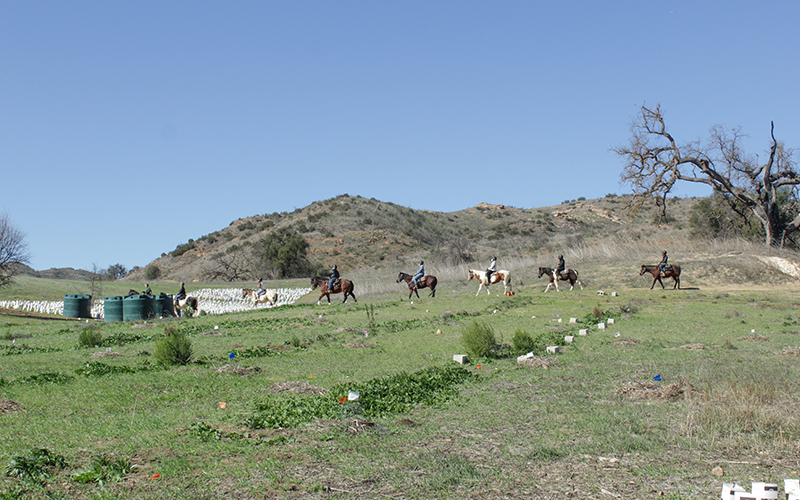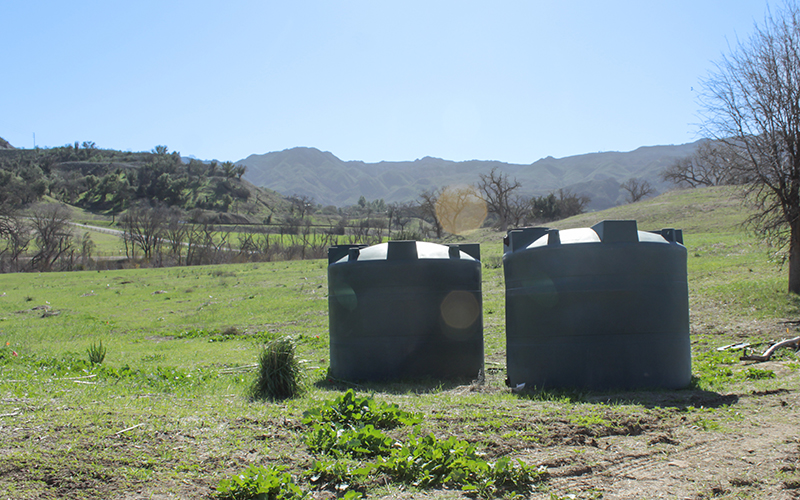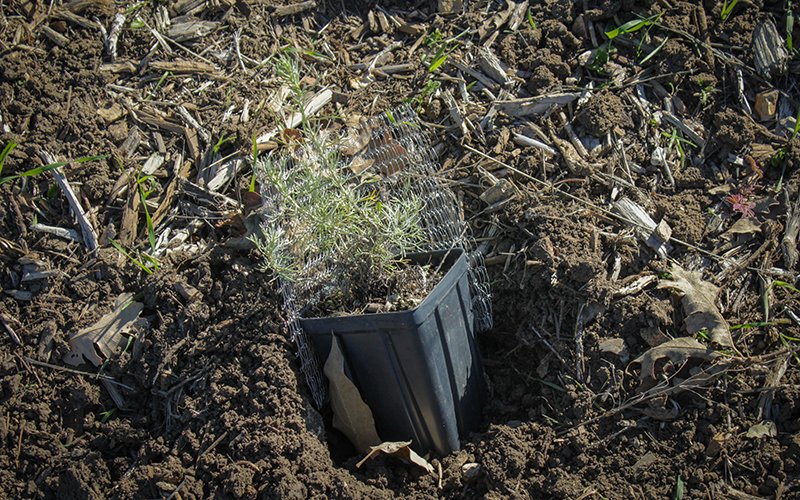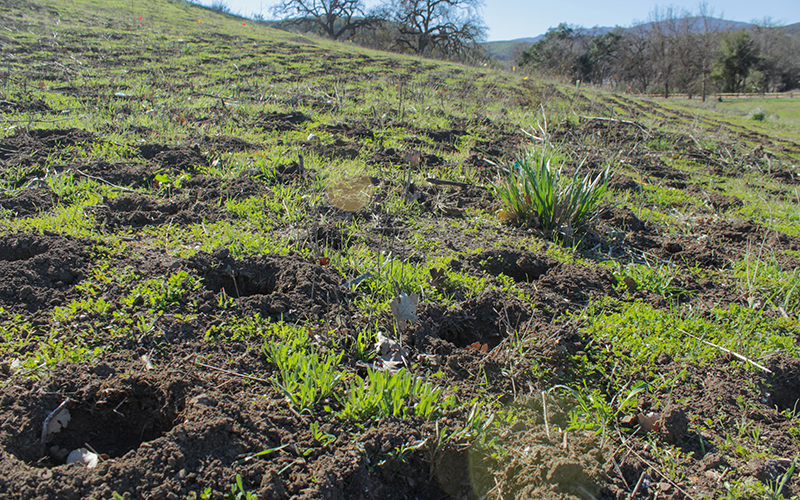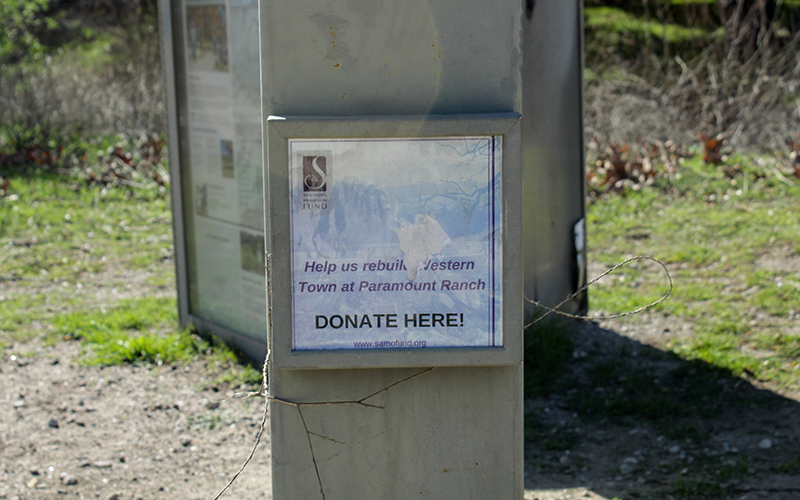Restoration techniques include wrapping roots in biodegradable wire materials and placing milk cartons around the plant to protect it from gusty winds and hungry herbivores. Cinder blocks also have been placed because of their durability and ability to control invasive plants.
“The milk cartons have been fantastic, I mean they work really well,” Algiers said. “They do kind of fall apart, but we reuse them as much as we can. We stake them in the ground, and once the roots have been established for a few months, we take the milk cartons off. And even if the plants get eaten, they’ll survive.”
Although protective measures are taken with new plants, these measures don’t harm the ecosystem or the species within it. One prevalent species within the Santa Monica Mountains is the gall wasp. While wasps aren’t too popular with humans, they are a big part of a full ecosystem.
“Wasps will sting and deposit their eggs onto an oak, and the oak forms almost like a tumor at the point of deposition,” Algiers said. “Then galls form and the eggs of the wasps will hatch inside.”
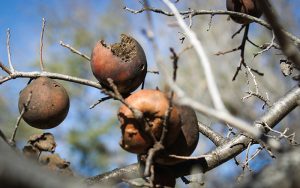
Galls form in valley oak trees when gall wasps lay their eggs on branches. Both species are native to California and help other native species survive. (Photo by Lauren Lively/Cronkite News)
“This is another example of the relationship between insects and plants that are critical,” Algiers said. “We need oak trees and we need the next generation of wasps to continue because they prey on other insects and they are eaten by spiders and birds. Then the birds nest in the oak trees, and then the birds’ eggs can get eaten by snakes. Snakes get eaten by bobcats, and all these relationships can happen just because of good native vegetation.”
With the National Park Service goal to plant 100,000 plants and trees, many donors and volunteers are stepping up to make that goal possible, including Re-Plant Love, Open Hearts Foundation, Tree People, the Malibu Foundation and the city of Agoura Hills.
“About 1,500 of these oak trees were grown at a nursery and donated by Tree People,” Algiers said. “They helped plant thousands of plants and shrubs around these trees and we will be out here again next year expanding even more.”
